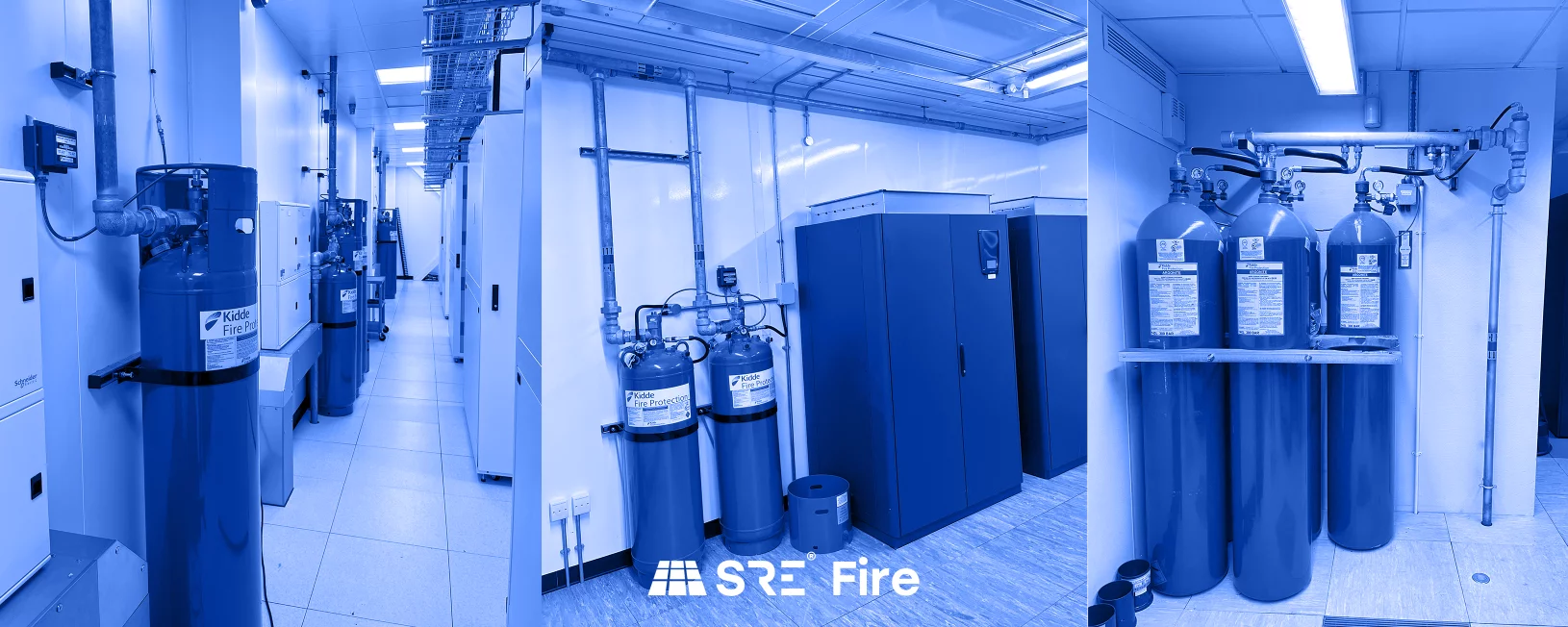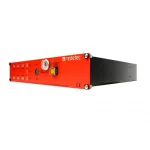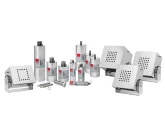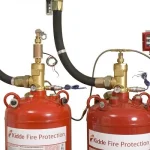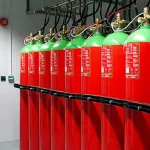The costs to recharge a discharged or partially discharged fire suppression system depend upon its design. We provide a recharge service and would need to know the type of system installed, the number of cylinders, their location and of course the fire suppression agent require. We would normally carry out a site survey before quoting as part of our risk assessment and method statement.
Server Room Fire Suppression Systems
Fire suppression is a critical infrastructure system within a server room and data centre environment. Whilst a fire in a server room is rare, a fire can lead to loss of data, IT systems and potential injuries or even a fatality. Our data centre fire control systems prevent these unfortunate incidents from occurring. Server rooms and data centres provide an environment containing both combustible materials in the form of electrical wiring, network cabling, UPS systems, IT servers and peripherals, and an ignition source in the form of the local electricity supply.
Data Centre Fire Suppression Systems
Installation of a suitable data centre fire protection system may be mandatory due to legislation and/or a requirement by an organisation’s insurance company. A fire suppression system is an automatic system that controls and extinguishes fires without human intervention.
Fire suppression systems for server rooms and datacentres can be based on wet-pipe sprinklers, pre-action sprinklers or a suppression system which may be a clean agent, inert gas or mist. In datacentres a single wet-pipe sprinkler system is not ideal. The system is always water filled and the pipes have a potential for false discharge, water leaks and pipe failure. Many older facilities use mechanical pipe connections with more modern facilities using welded pipes which are more reliable.
Two water-based fire suppression systems were traditionally the preferred choice for datacentres and server rooms. These can be separate or double interlocked systems. Single interlocked fire suppression systems rely on an event such as a smoke alarm before activating and releasing water into the environment. The system is not that resilient as a smoke alarm breakdown or sprinkler mechanical failure could result in a non-triggering. Once water is in the pipes, the system acts like a wet-pipe system, waiting for a high room temperature before all the sprinklers are activated. A double-interlock provides some resilience and redundancy. A smoke alarm and sprinkler activation must occur at the same time before water enters all the pipes and is discharged. The issue with water-based systems is that the water released can lead to further damage to the servers and IT equipment. Water mist provides another alternative but with the same potentially damaging effects. These use high pressure water and produce very fine water droplets, typically less than 1000 microns. Water-mist systems have benefits similar to clean-agent systems.
Alternative fire suppression systems are based on inert gasses or clean agents. Clean agents were developed to replace Halon 1301 and are less damaging to IT servers and equipment. Factors to consider when designing this type of fire suppression systems include: pre-discharge warning signals, manual discharge stations, space for agent supply, reserve agent supply, total flooding or local flooding applications. Differences between the two types of agent include:
Inert Gas Fire Suppression Systems use a mixture of Argon and Nitrogen gasses and may also use combine this with small amounts of Carbon Dioxide, to displace any remaining oxygen within the server room or datacentre to below 15%. At this low oxygen level, a typical fire can continue and will be suppressed. Where there is risk to human life, the oxygen level must be maintained above 12%, the minimum level considered necessary to sustain human life. When activated an inert gas fire suppression system will discharge its gas mixture within one to two minutes. The typical gases used include: ProIntert, IG55, IG541, Argonite and INERGEN. This type of system may require venting for pressure.
Clean Agents – Halocarbon/Chemical/Synthetic Gas Fire Suppression Systems use a form of cooling mechanism and do not significantly reduce oxygen levels. The chemical or synthetic gas can however be toxic in large doses. When activated chemical/synthetic fire suppression systems will discharge quicker than inert gas fire suppression systems and within 10 seconds. The typical gases used include: FM2000, Halon, Novec1230, FK-5-1-12, Ecaro, HFC227ea and HFC125. The volume of gas used is typically smaller than an inert gas fire suppression system and the system will require venting for both positive and negative pressures during discharge.
A typical fire suppression system will have several other parts as part of the overall design to meet server room fire safety regulations including:
- A fire suppression control panel: covering two to three fire zones, with a gas release button, automatic and manual key switches and built-in battery backup. The fire panel can be integrated to a Building Management System (BMS) and be remotely monitored on a 24/7 basis for alarms.
- Smoke alarms: two are the minimum recommended for any installation regardless of room size, with smoke alarms fitted to all voids including raised access floors and suspend ceilings.
- Audible alarms and beacons: with bells and sounders to provide both audible and visual indication of a fire and warn that the fire suppression system is to be discharged.
- Other components include warning signs, and pressure relief valves.
Once a fire suppression system has been installed, regular maintenance is required. An organisation should also appoint a Fire Officer to organise training and manage evacuation drills and co-ordinate with local emergency services. An organisation may also consider local fire extinguishers which will also require annual inspection and maintenance.
When designing a fire suppression system for a server room or datacentre environment several factors will affect the overall design and cost. Choosing the most suitable gas and fire detection system (typically a VESDA) are important elements but it is also necessary to consider where the system will be installed in the building, server room or data hall integrity and the type of critical cooling systems installed as these can affect fire suppression system effectiveness.
Even when a fire is detected in a critical IT environment, the amount of power consumed within a server cabinet will generally mean that the cooling system must remain active even if a smoke alarm is triggered. This is because the amount of power consumed within the server cabinet and heat generated could lead to a secondary fire ignition point. The continuous operation of a cooling system during a fire emergency can disrupt gas discharge and distribution within the environment. The use of local free-air cooling and direct access ventilation can also complicate matters and the installed fire suppression system must be designed to accommodate this and operate on a 24/7 365-day a year basis regardless of air mixture, sources and temperatures.
For any server room or datacentre environment a ‘double-knock’ is always recommended requiring the activation of at two smoke-alarms in at least two zones before activation of the fire suppression system.
Fire Suppression Services and Maintenance Contracts
Please contact our projects team or see our range of fire suppression services and maintenance options for further information.

Earn SRE points on all online purchases with double points on selected products
























